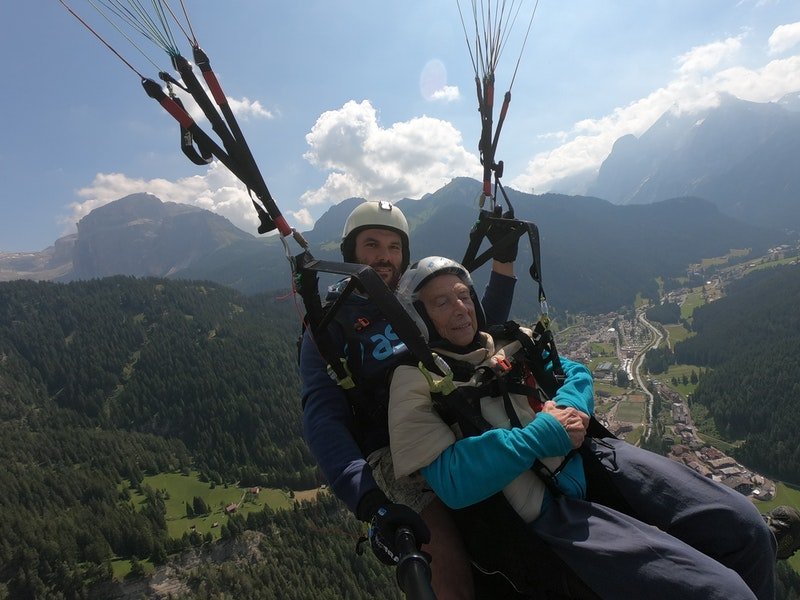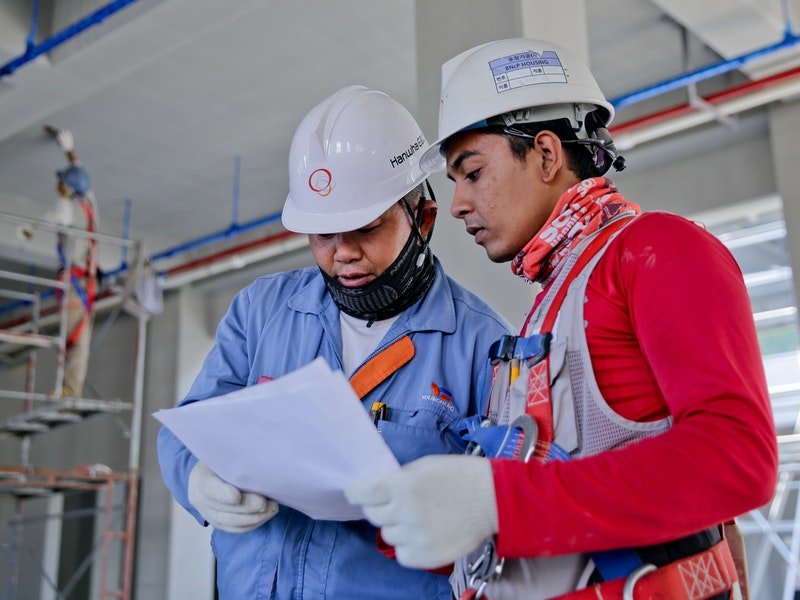Is base jumping dangerous? Base jumping regularly makes headlines for fatalities or trends on social media due to its death-defying moments. You wouldn’t be 100% wrong in thinking that base jumping is only for the slightly crazy and suicidal. Even watching a go pro flight of a regular base jump can have your heart beating fast and the adrenaline starting to pump.
Is base jumping really as dangerous as some of the footage makes out, or is it that just the most extreme footage and most dangerous moments get the attention? Are there ways to perform base jumps with relative safety?
Let’s explore just how dangerous base jumping is. We will look at why it’s considered one of the most extreme sports and how it compares to skydiving. We will also talk about ways to base jump with more safety.
Why is base jumping dangerous?

The premise of base jumping is leaping off grounded objects. The acronym BASE stands for Bridges, Antennas, Spans (bridges), and Earth (Mountains and cliffs). The fact base jumping means to jump off and descend so close to objects, buildings, and natural dangers is one reason it’s so dangerous. Jumping so close to an object always runs the risk of your lines crossing, your canopy twisting, and then suddenly you are heading into the object you just jumped away from. Some techniques can spin the jumper around again, but reactions must be lightning quick to avoid serious dangers; often, there just isn’t enough time.
At 330 feet, a low base jump takes just 4-seconds to hit the ground without the parachute. While specialist configurations are in place to allow the parachute to start filling with air the moment you jump, things can still go very wrong. Jumping at low heights, you are at the risk of a rogue gust of wind. You are relying heavily on your gear and the packing of your canopy. If anything goes even slightly wrong, you can have a fraction of a second to react. One of the most common causes of death during a base jump is not deploying the canopy in time.
One of the most dangerous details is your speed. Despite immediately going into freefall, you need time to gain momentum. You won’t have time to reach your terminal velocity (which takes up to 12 seconds). After 1 second of freefall, you will only be traveling at 10 MPH. It takes 3 seconds to reach 50 MPH, and parachuting equipment is designed to open at high speeds. Opening a parachute at lower speeds allows any incorrect body positioning or strong winds to cause significant problems.
How dangerous is base jumping?

As far as extreme sports go, base jumping is undoubtedly one of the most dangerous. Base jumping is up there with free climbing, cave diving, and heli-skiing. It’s arguably the most dangerous. No matter how well you plan a base jump, there are always dangers that rely on split-second reactions.
With almost every sport in the world, you learn through experience and making mistakes, but you rarely get that luxury in base jumping. When things don’t go to plan, the consequences are usually high; minor issues can become life or death moments in a blink of an eye.
When we try to estimate or calculate how dangerous base jumping is, it’s hard to put it into numbers because there is no widely recognized governing body. Many successful and event-free base jumps go unrecorded. There are lists of base jumping and wingsuit deaths, with the current number at the time of publishing being 412. This reliable list shows the date, place, and reason behind each death. On average, there are 15-20 deaths per year, with the exception of 2016, which saw 37 deaths, and in 2018 where 32 deaths occurred.
How many dangerous accidents happen in base jumping?

Despite base jumping being a somewhat secretive sport, some necessary studies have looked at the dangers of base jumping and wingsuiting.
Here are the two most significant and detailed studies of base jumping accidents:
How Dangerous is BASE Jumping?
An Analysis of Adverse Events in 20,850 Jumps From the Kjerag Massif, Norway in 2007 by Christian Lycke Ellingsen
This 11-year study by Ellingsen recorded 30,850 jumps with an average height of 1,983 feet (ranging from 400 to 3,000 feet). There were nine fatalities (equalling one death in every 2,317 jumps) and 82 non-fatal accidents (1 in 254). Deaths were exclusively related to heavy impacts and severe injuries. The most common non-fatal accidents were to ankles and knees and some minor head concussions.
Parachuting from fixed objects: A descriptive study of 106 fatal events in BASE jumping 1981–2006 by Dr. A Westman
Analyzing 106 base jumping fatalities, Dr. A. Westman found the following as the fundamental causes of deaths.
- Parachutist free fall instability: Body positioning errors made by the jumper in freefall
- Freefall acrobatics and deployment failure by the parachutist: Failed maneuvers and failing to deploy the parachute
- Equipment factors included pilot chute malfunction and parachute malfunction.
- One of the most common causes of death in cliff base jumping was parachute twists, opening, and causing the jumper to fall back towards the cliff.
Shockingly, Westman concluded that in 2002, an estimated one in 60 base jumpers died.
The most dangerous sports tend to record deaths per 100,000. Using Elligsen’s extensive study, we can estimate the risk of death during a base jump at 43 in 100,000 jumps. When we compare that to other risk spots, it isn’t very comforting. Rock climbing records one death in every 320,000 climbs, scuba diving sees roughly one fatality in every 200,000 dives, and hang gliding sees one in 116,000.
Is base jumping more dangerous than skydiving?

Base Jumping is significantly more dangerous than skydiving. Base jumpers face all the dangers of skydiving, plus some extraordinarily more dangerous problems. Modern skydiving is a relatively safe sport, with lots of training, supervision, equipment, and procedures to limit risk and avert danger. Base jumping is certainly not.
Not only does base jumping lack a recognized governing body and set of strict rules and procedures, the added factor of jumping close to objects and at typically low altitudes also creates lots of unpredictability. The majority of recorded base jumps are under 2,000 feet, with building and antenna jumps averaging under 1,500 feet. Put this into context with a skydive, where most professional skydivers will deploy their parachute by 2,500 feet, or at lowest, 2,000 feet, with permission.
Even base jumping at 2,000 feet leaves little time to gain freefall speed. And while a skydiver may have time to assess and correct any issues, if the parachute doesn’t open correctly during a base jump, there will be little to no time to fix things.
While there’s no such thing as a totally safe skydive, the chances of receiving an injury during a tandem skydive are around one in 1,100 jumps and one in 3,300 jumps for a trained solo skydiver. When it comes to fatalities, it’s estimated to be 0.12 per 100,000 tandem jumps and one in 100,000 solo skydives by a licensed jumper. These stats make the addictive base jumping about 43 times more dangerous than skydiving.
Can you base jump safely?

While it might not be possible to base jump safely, things can be done to limit the risks of death and injury. Many incidents are indeed caused by an error in judgment during a base jump; with very little time to react, these can often be unavoidable. However, making an error in judgment before you jump can be avoided.
Risk and consequence assessment are essential to limiting base jumping dangers. Base jumpers must know their level and earn their stripes at simpler and safer jumps before taking on more challenging ones. Here are some essential things to check and consider:
- Weather: limit jumps to calm weather days. Don’t allow the weather to add any additional dangers to an already dangerous sport.
- Heights: Start at greater altitudes before considering low altitude base jumping. Even if you have 1,000 skydives behind you, it doesn’t fully prepare you for the challenges of a base jump.
- Proximity to buildings: Tall bridges are generally much safer than tall buildings or antennas because you are clearing your object once you jump.
- Canopy folding and gear checks: repeatedly pack and check your canopy and equipment. There is zero room for even the slightest error.
- Safety record: check the safety record of your jump spot. You can instantly get an idea of the danger by checking the accident rate of that spot before you jump.

